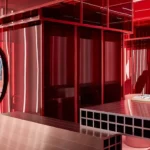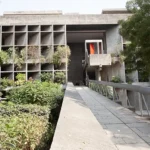
In Oaxaca, Mexico, RootStudio in collaboration with LABORA has transformed a former plywood factory site into Parque Primavera Oaxaqueña Cho Ndobá. The park’s name means “spring” in Mazatec, a nod to its role as a place of renewal. Spanning 11.84 hectares, the project has converted degraded land into a multifunctional space that integrates culture, sports, ecology, and community engagement.
RootStudio, working with LABORA, led the design of the park. Their approach combined architectural and ecological planning, restoring existing structures and introducing new ones made with local materials such as recycled wood and recovered metal. An 85,000 m² ecological edge now links the park to the city’s public spaces, creating a continuous green corridor.
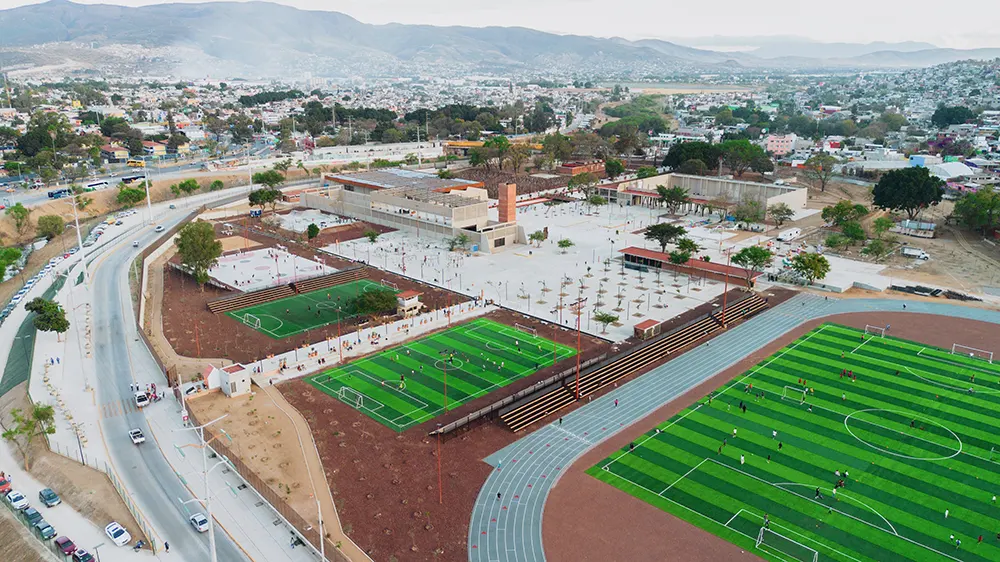
Cultural Spaces with Local Meaning
The Museum of Corn and the Milpa serves as one of the park’s most significant features. This space honors Oaxaca’s agricultural heritage and showcases 35 of Mexico’s 53 existing corn varieties. It functions not only as an exhibition space but also as an educational center focused on biodiversity and food sustainability.
Other cultural and recreational facilities include a fairground, an open-air cinema, and the 27,500 m² Central Plaza. This large public area hosts recreational activities, sports, and events, becoming a central gathering point for the community.
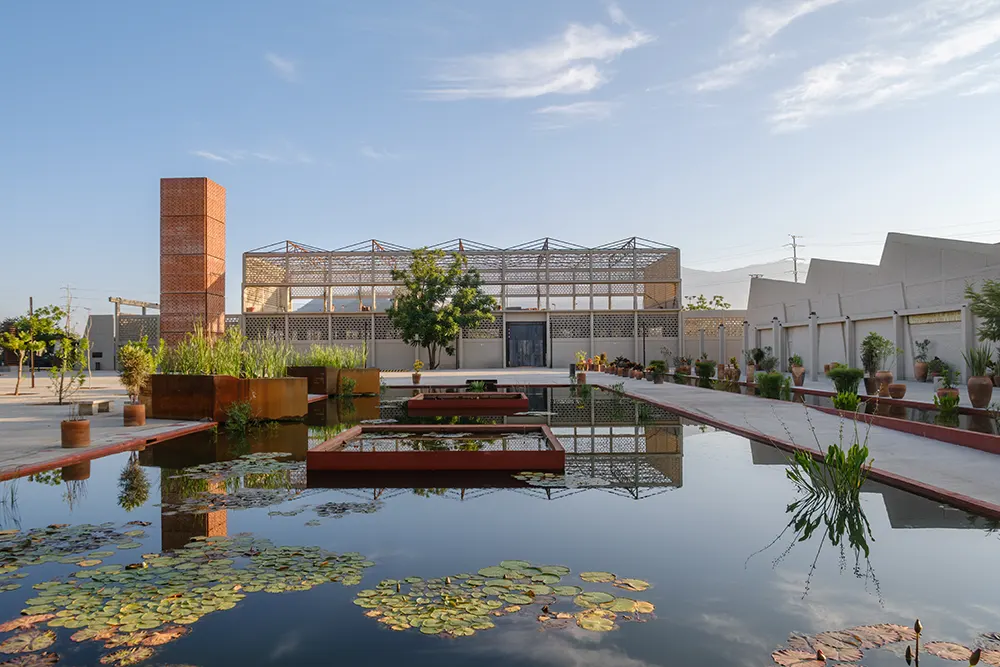
Sports and Recreation for All
Parque Primavera incorporates diverse sports infrastructure to encourage active lifestyles. Visitors can use bike lanes, jogging paths, and courts for soccer, volleyball, and basketball. The skatepark meets professional competition standards, while a climbing wall in the sandpit adds to the variety of physical activities available.
The design emphasizes accessibility. The park features paths and recreational zones adapted for people with reduced mobility, ensuring that the facilities serve all visitors. Safety measures include illuminated walkways, security booths, and an integrated entry system that supports a sense of shared responsibility among community members.
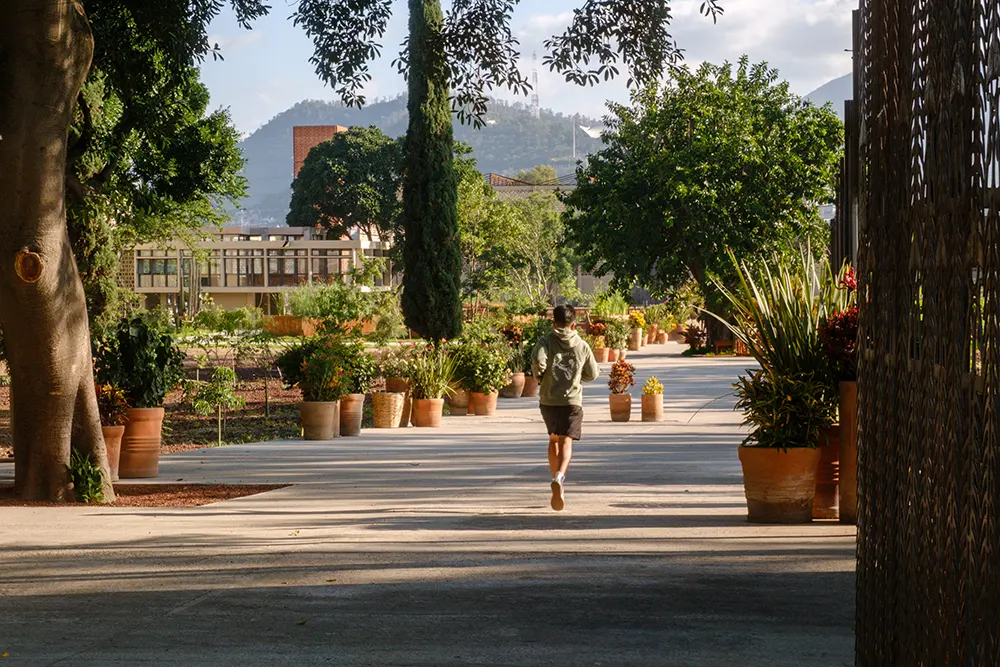
Ecological Strategies and Education
Sustainability plays a central role in the park’s operation. Rainwater harvesting systems and infiltration wells help manage water resources. A constructed wetland naturally purifies water, while a plant nursery and ethnobotanical garden preserve native species. These green facilities also serve as educational spaces, allowing visitors to learn about conservation practices and reinforcing a sense of belonging. By combining environmental management with public access, the park promotes awareness of ecological systems while providing practical benefits for the local climate and biodiversity.

Art and Community Expression
Artistic contributions enrich the park’s identity. The entrance features a gate by artist Francisco Toledo, designed with the motif from his work Peces. This pattern repeats along the perimeter fence, incorporating 796 individual pieces over one thousand meters.
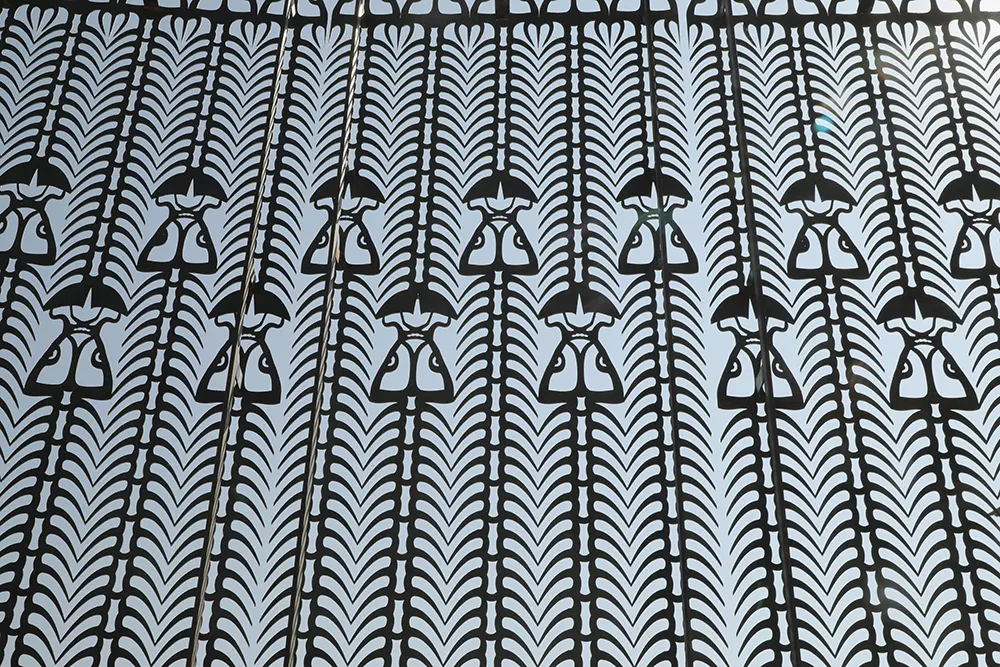
The monumental sculpture 2501 Migrants by Alejandro Santiago is also installed within the park. This work reflects on migration and the search for dignity by those who leave their homes. Under the guidance of artist Shinzaburo Takeda and ceramist Adán Paredes, children from Oaxaca’s eight regions created a ceramic mural made of 200 plates depicting local flora and fauna. These collective artworks ensure that the park reflects the voices and creativity of the community.
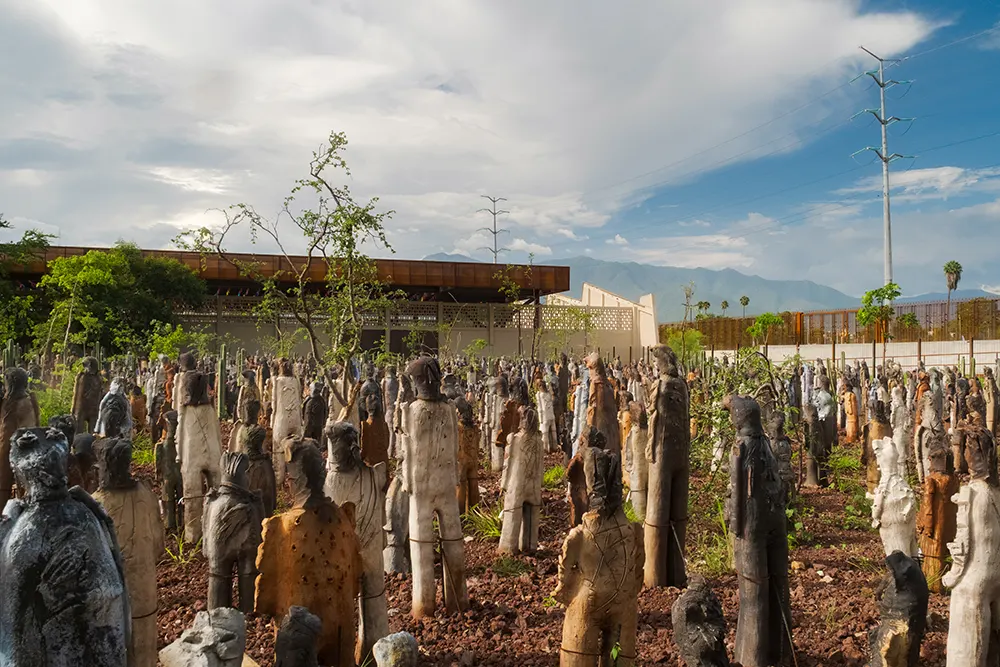
A Regional Landmark in Urban Regeneration
Parque Primavera Oaxaqueña Cho Ndobá stands as one of Oaxaca’s most significant recent urban infrastructure projects. The design eliminates barriers that once divided the neighborhood, establishing new physical and social connections within the city. RootStudio and LABORA have worked closely with the community to ensure that the park functions as a shared space for culture, recreation, and environmental stewardship.
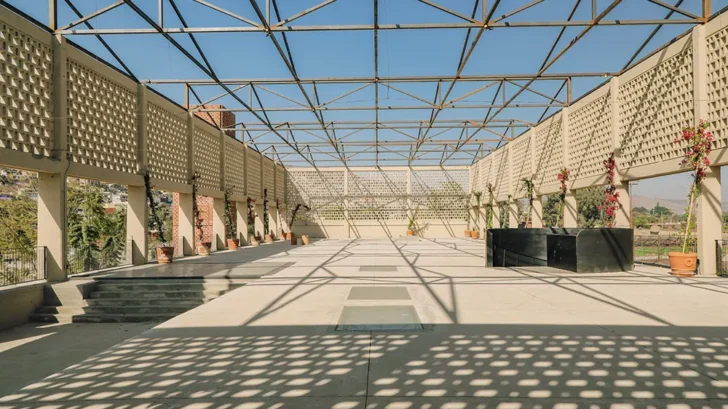
Project: Parque Primavera Oaxaqueña Cho Ndobá
Location: Oaxaca, Mexico
Architects: RootStudio, LABORA
Site Area: 11.84 hectares
Photo credits: Pacu


